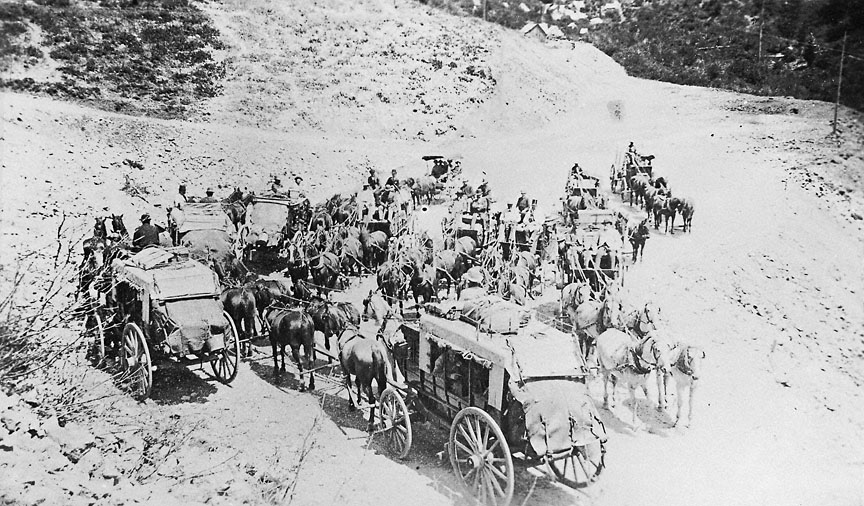- Catalog No. —
- CN 020669
- Date —
- 1887
- Era —
- None
- Themes —
- Transportation and Communication
- Credits —
- Oregon Historical Society
- Regions —
- Southwest
- Author —
- Robert Morrison
Last Meeting at White Point
This photo, probably taken in December 1887, purportedly shows the last stagecoaches to make the run between Ashland, Oregon, and Yreka, California. This route was fairly short-lived, lasting less than four years. The route was established in 1884 to link Ashland and Yreka while the Oregon and California Railroad finished the line between the two towns. By June 1887, five stages per day made the trip, connecting the southern terminal of the O&C Railroad with the northern terminal of the Southern Pacific.
One of the few settlements along the route was White Point, sixteen miles south of Ashland. This small stopover, established in August 1883, consisted of a post office and a hotel. The Southern Pacific later built a railroad station in the vicinity.
Although often viewed today as a romantic mode of travel, stagecoaches were actually quite slow and uncomfortable. A journey between Portland and San Francisco, for example, involved being crammed into a small compartment with several other people for seven days and nights as the stagecoach bounced its way over rough roads. Writing in 1865, the German immigrant Theodor Kirchhoff described stage travel as “one of the necessary evils for the traveler in the American West. He can be happy if a few 200-pounders do not hog space where six and (where necessary) nine slim passengers crowd three seats. In that miserable event, the slim ones constrict to shadows of their former selves.”
Further Reading:
Schwantes, Carlos. Long Day’s Journey: The Steamboat and Stagecoach Era in the Northern West. Seattle, Wash., 1999.
Scott, Edwin, ed. California to Oregon by Trail, Steamboat, Stagecoach and Trains, 1850-1887. Pasadena, Calif., 1976.
Written by Cain Allen, © Oregon Historical Society, 2003.
